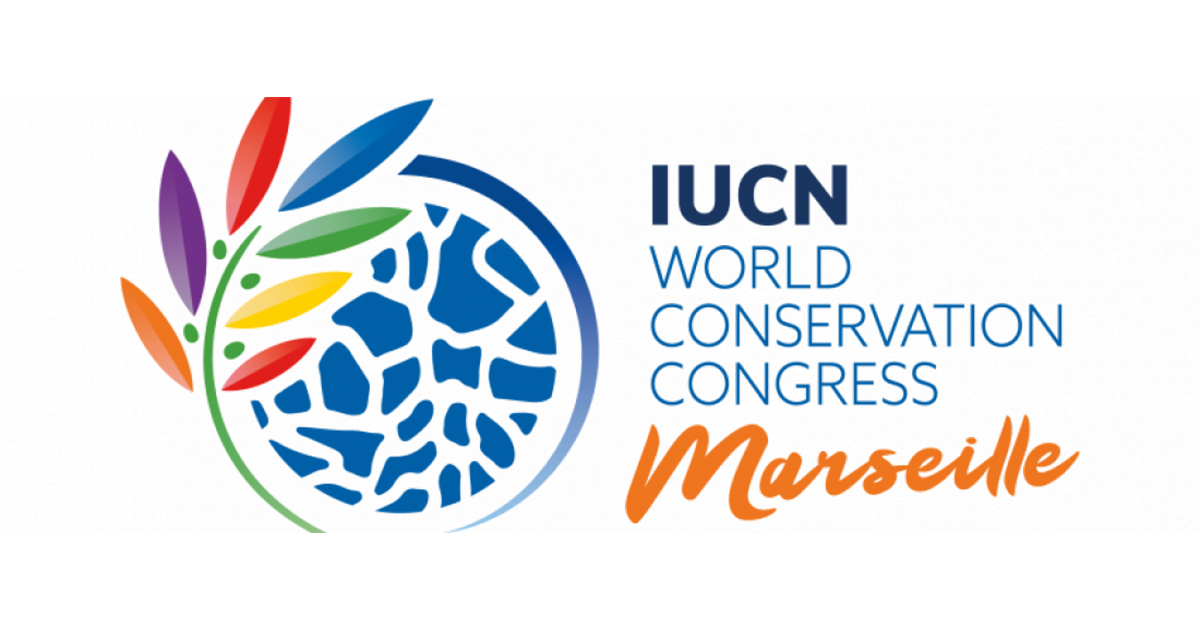Stricter Guidelines Needed to Balance Development, Conservation and Social Issues Related to Mining

Engaging different actors involved in and impacted by mining is one way to reduce the risks to people and nature, according to experts participating in the IUCN World Conservation Congress this week.
There is a growing demand for minerals and metals, due to in part to the transition to a low carbon economy, which could threaten terrestrial and marine protected areas as well as biodiversity sanctuaries.
Panellists from different sectors related to mining and conservation discussed approaches to reduce the negative impacts from mining and ensure it delivered more benefits to nature and society. In a virtual Congress session, "Balancing development, conservation and social issues related to mining," they debated the need to scale-up engagement with the mining sector as well as adopt more regulations to safeguard society and the environment.
Yolanda Kakababse, an Ecuadorian conservationist and former IUCN President, moderated the session and opened the discussion, drawing attention to the need for nature-positive approaches.
“Conservation and mining are walking on different pathways. IUCN believes that we won't meet unless we talk to each other and identify best practices and challenges to decrease the impact of mining on the environment and society,” she said. “An urgent discussion for IUCN and its constituents is to be better involved and engaged in understanding how we can come to agree on practices that make this planet healthier."
Defining clear responsibilities and accountabilities, built with the participation of different stakeholders through dialogue, can be a starting point to convene the different actors and agree on a set of guiding principles, according to the panellists.
"Achieving a balance really does depend on collaborative action, but it also depends on distinguished responsibilities and accountabilities for governments, mining companies, alongside society and communities,” said Aidan Davy, Chief Operating Officer and Director, Environment Programme for the International Council on Mining and Metals (ICMM).
Mining is expected to expand significantly in the coming decades to meet the demand for the transition to a low carbon economy, and this creates risks to biodiversity, especially as the sector moves into new areas, said Luis Sánchez, professor at the University of São Paulo, Brazil.
"No mine is an island. Additional infrastructure is necessary to open new mines and to transport their outputs. This simple fact has two important implications. Firstly, building that infrastructure can have a direct impact on biodiversity values. Secondly – and more important in many regions — such infrastructure opens the way for additional losses as they facilitate both new development and illegal, harmful actions, such as logging," said Mr Sánchez.
For some minerals, particularly gold, artisanal and small-scale mining (ASM) will likely grow as long as prices for such resources remain high and poverty continues to push people into this activity. Most ASM is hard to control and either informal or illegal, and many governments have not yet developed adequate policies to sustainably develop this sector.
According to Estelle Levin-Nally, founder and CEO of Levin Sources, "If we can take a human rights lens to this issue, and there is the willingness to dialogue with ASM stakeholders, and the capacity to build the structures to facilitate responsible ASM, then we will be able to progress. However, as long as there are protection economies and corruption feeding on (ASM activity) and facilitating entry and mining in protected areas, we will struggle to tackle it."
There are ways in which the mining industry and governments that regulate that industry can minimise the mining sector’s negative environmental and social impacts and increase its overall positive contribution to conservation and community development. However, on the ground, goals are often at odds with local priorities, and there is a need to align them with social and biodiversity outcomes.
Governments also have a decisive role in achieving this balance by establishing and applying legislation and recognising best practices.
Melinda Janki, an international environmental lawyer and Executive Director at Justice Institute Guyana, presented the experience with the Wai-wai in Guyana, where, by adhering to the national government guidelines, they were able to add their entire territory to the National Protected Area System.
“The government needed to understand the rights of indigenous communities and that they are land stewards,” she said, adding that dialogue with communities requires mutual understanding to be meaningful. “Some indigenous communities do not agree on definitions, for example ‘sustainable mining’ — that does not exist. Mining is not sustainable.”
New tools and technology that promote carbon-neutral and net positive impacts are helping companies build robust biodiversity strategies and identify the best management practices that reduce their risks at the site and corporate levels.
Investors are also becoming more diligent in looking at conservation and biodiversity risks associated with mining projects. This is helping drive change and stimulate different models of partnerships with multiple stakeholders and, importantly, at the regional level.
However, De Beers Group Senior Vice President for Sustainable Impact Katie Fergusson said there is a need to think differently. "Interconnectivity with different issues is challenging the sector, and we need to think not just about risk management, but also on how we create greater value to the stakeholders.
Stephen Edwards, IUCN Senior Programme Manager for IUCN, noted that the mining sector is making several commitments to mitigate their impacts on biodiversity influences by working with natural climate and nature-based solutions. Science and academic research also can play a key role to change mining practices. However, he warned: "Not all companies or commodities are the same, so we need to be careful not to over-generalise or try to over-simplify our responses and approaches."
Ms Kakabadse, the moderator of the session, concluded by calling for more responsible action that promotes engagement and respects the principles of partnership, which she said is what development means.
To watch the session, please access https://iucn2021.key4.live/media-372-balancing-development--conservation--and-social-issues-related-to-mining. (Available for participants of the WCC)
More information about the World Conservation Congress is available here https://www.iucncongress2020.org/fr/programme/official-programme.

